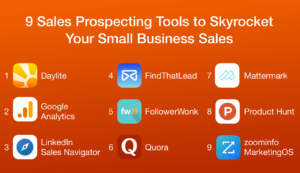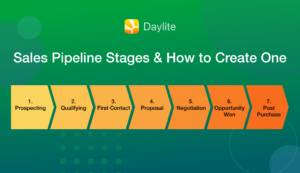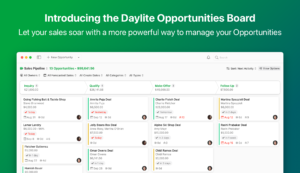Sales cycles can be many different lengths, but every business would like theirs to be shorter. More complicated projects usually take more time to figure out what needs doing before an estimated price can be arrived at. Or sometimes getting a quote for preset services or products is easy, but it takes a long time for the PO to go through their approval process. Whatever the factors are you should now have a much better idea what an average sales cycle is for your business.
So whatever that time frame is, if you can shorten it, you can close deals more often and increase the revenue side of your balance sheet. Here are a few simple things to consider so that it’s not you holding up the sales process.
Ending every interaction with clear next steps.
Whether it’s an initial bump into a stranger at a work conference, or an initial meeting over coffee, or a phone call with a long standing client, try to define what the next steps will be and who is responsible for doing them.
If during a meeting, a potential client mentions that they can send you an example of their existing system, or make some other sort of a promise to you, make sure you end your interaction with reviewing what everyone is planning on doing to keep this process going.
“Okay, I’ll make sure that I send you a link to that case study you were wanting to see, and you were going to check with your support team to see what version you’re currently running and forward that to me. Thanks again for your time, Jim – talk to you soon.”

Now it’s just a matter of recording those tasks down and making sure they’re not forgotten. Taking notes during meetings about all points of discussion, not just actionable items, is a good habit get into. Moleskine or FieldNotes notebooks work just fine for many people. But at a certain point, the increasing number of things need to manage can make transferring those notes and tasks into a software tool increasingly time consuming, and thus less likely that you’ll do it regularly.
If you are an iPhone user, obviously we think Daylite Touch is a great way to quickly capture those things you’ve promised people. But simple text based notepad that syncs, like Simplenote or Evernote, can work great too.
Consistent followups
So, you’ve become a compulsive capturer, and every promise you make gets diligently entered into your system. Now you just need to setup an easy way to remind yourself about when to do things that have due dates, or tasks that are holding up the sales process somehow.
Many task managers can assign due dates and this is definitely a good strategy for things that have specific date based deadlines that can’t be pushed back. If your client’s budget meetings are being held on Sept 17th, you definitely better have your proposal submitted by Sept 15th. But what about tasks that need doing within a certain timeframe but don’t exactly have a particular hard deadline attached to them?
One tactic for dealing with this is using the creation date of when a task is entered into your system. For example, you could sort your task list by creation date so that promises you’ve recently made are at the top. Or reverse the sort to see the tasks that have been there the longest. You should monitor this list regularly to make sure you haven’t let anything you’ve promised to do stay on here for longer than two weeks. If there are really old tasks there, for sales that have long gone cold, or abandoned ideas you had, either move those out to an “archive” list or just delete them entirely.
Or, use the date that you last communicated with your prospects as a guide for when to followup with them. Create a list of the people you’re actively selling to and check on each of them to see when you last sent or received an email. If it’s been longer than 10 days, or however frequently you tend to check in with prospects, go ahead and figure out a way to communicate with them again. Certainly, some clients are busier than others and need helpful prodding from time to time. There is a fine line, but with a bit of empathy and humor, most people don’t mind a followup or two, especially if they are interested, but just busy. Try to make your followups useful for them as well by including a link to an article you found, or a new support article they might find helpful.
Again, none of this is rocket science. But it is a matter of having a system in place to make sure you aren’t letting sales get any colder than they should. It’s so easy to get caught up in your day to day work and let those important follow ups slip a day or two and before you know it, you’ve added a couple weeks to your sales cycle. Your potential revenue for the year is reduced because your total number of deals is less. Or worse, you are stressing at the last minute to close deals because you’ve got payroll or rent due. A hurried timeframe almost always hurts your ability to bargain from position of strength.
In either case, make sure it’s not you affecting the length of your sales cycle by leaving unclear next steps or not following up with your prospects in a timely manner.


